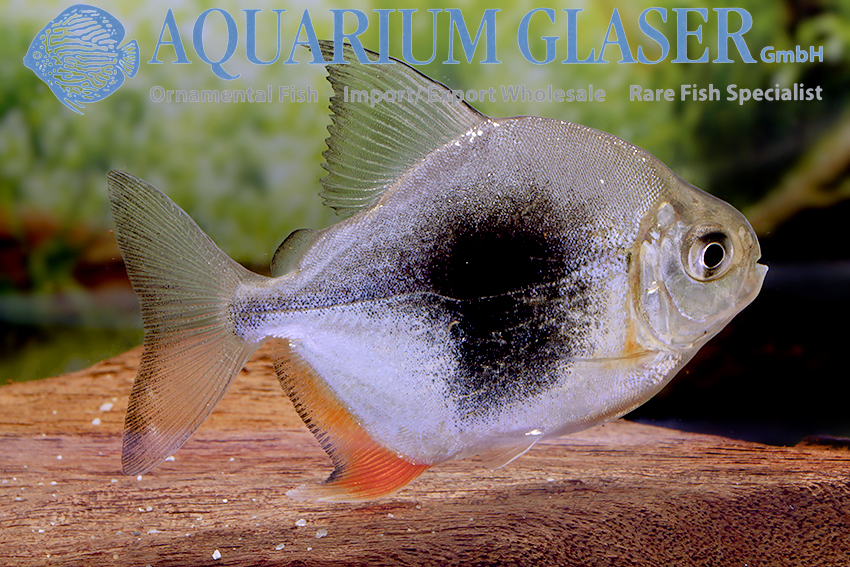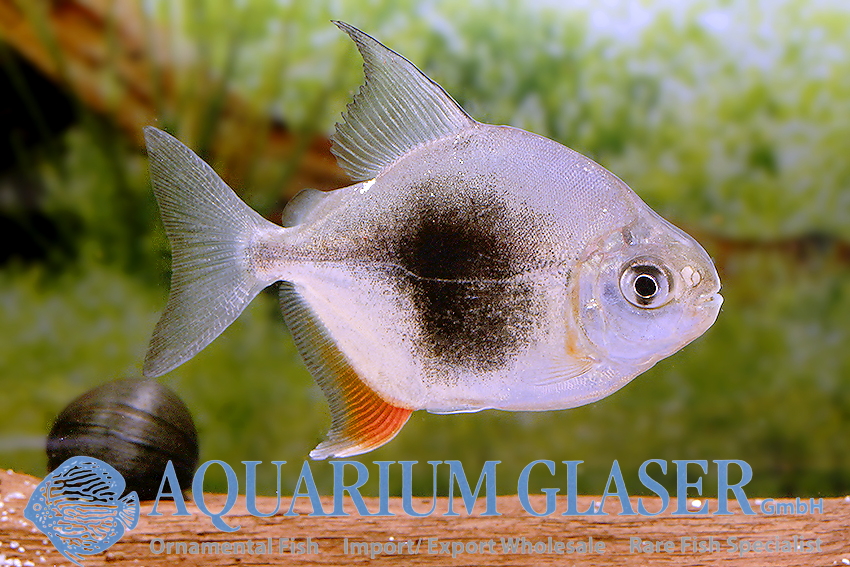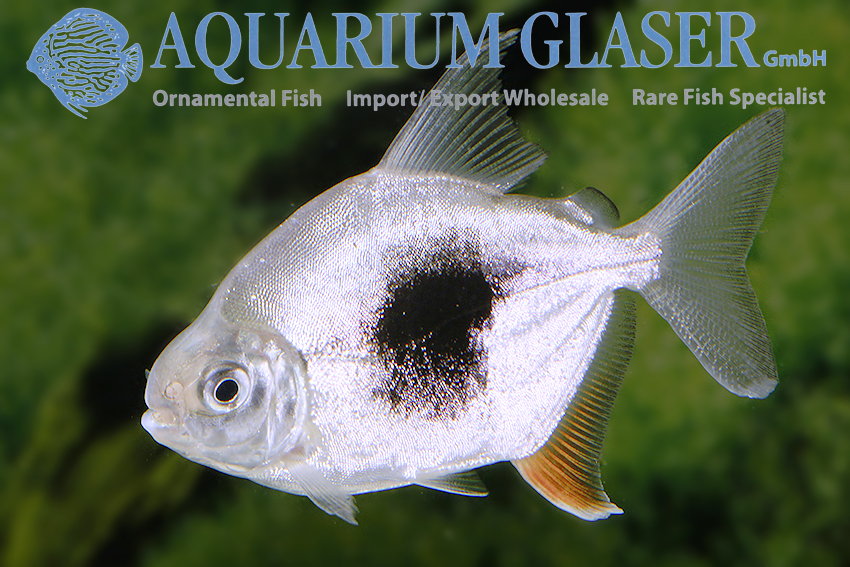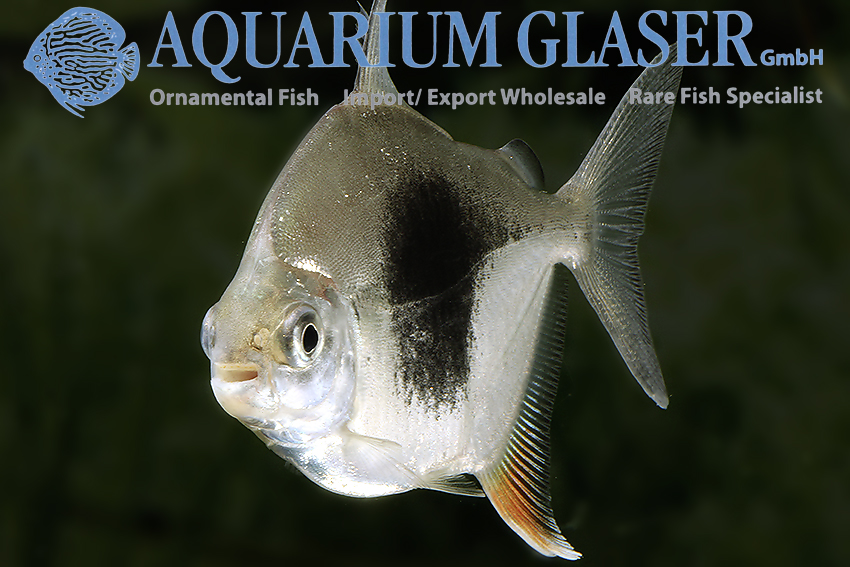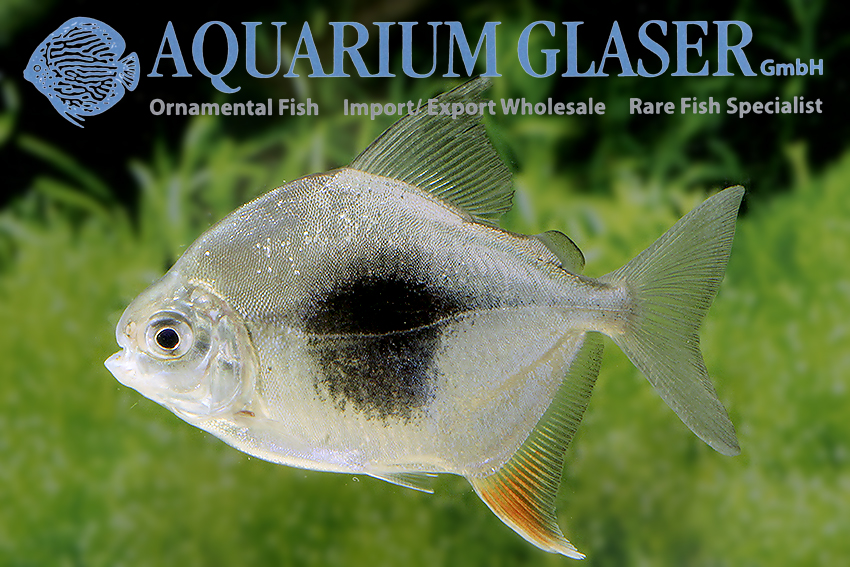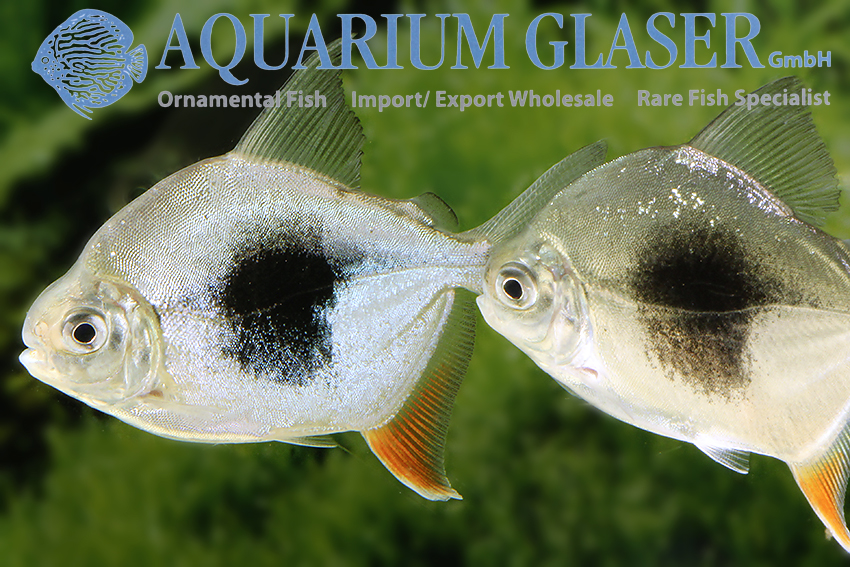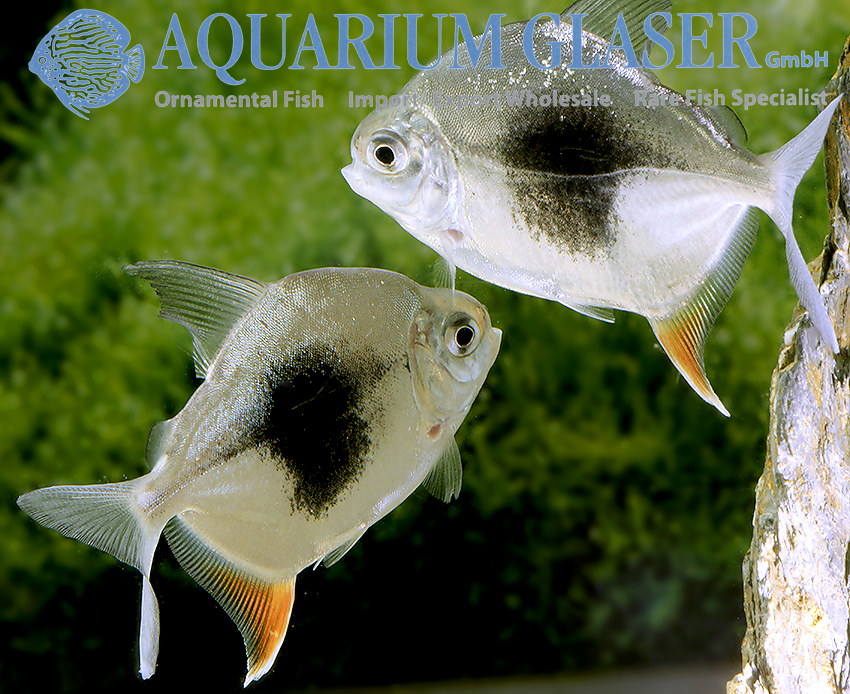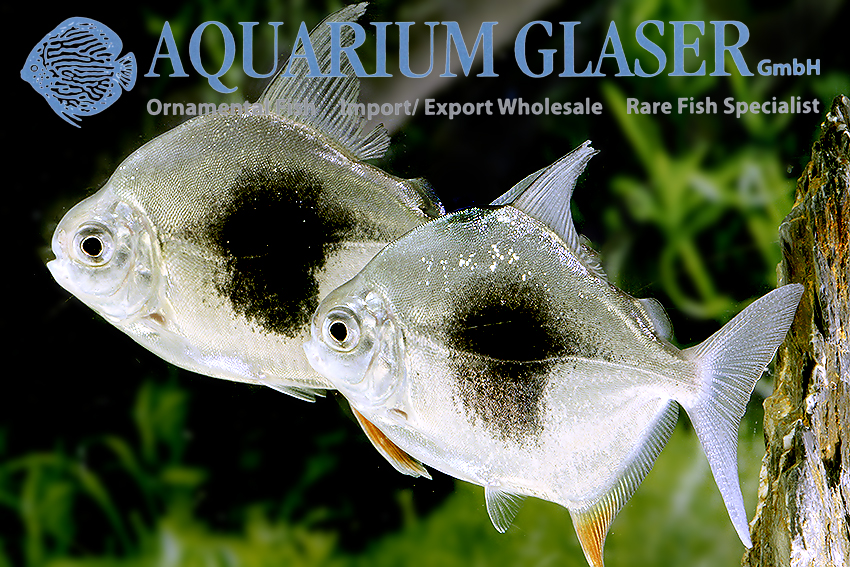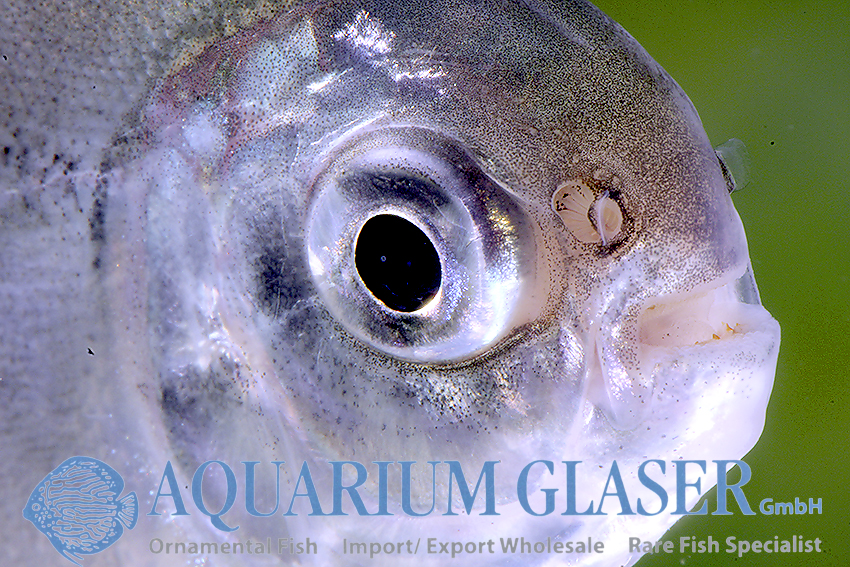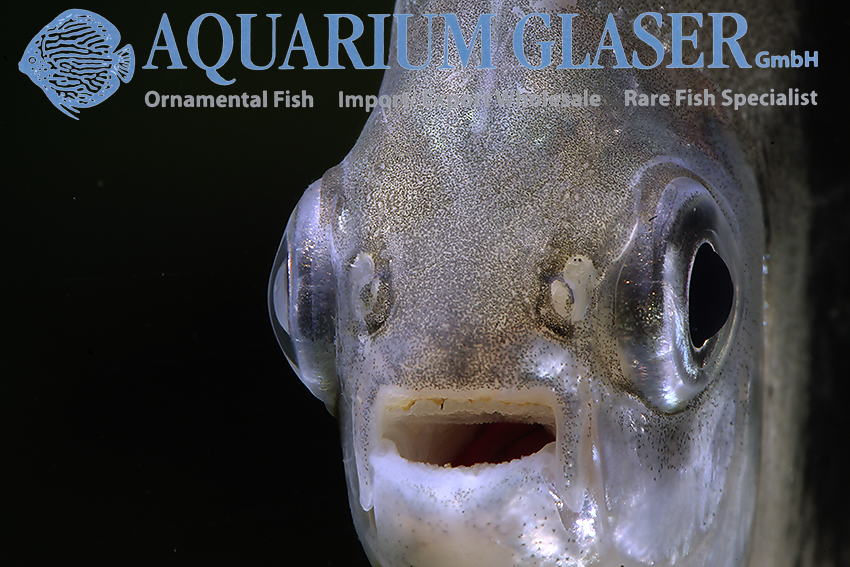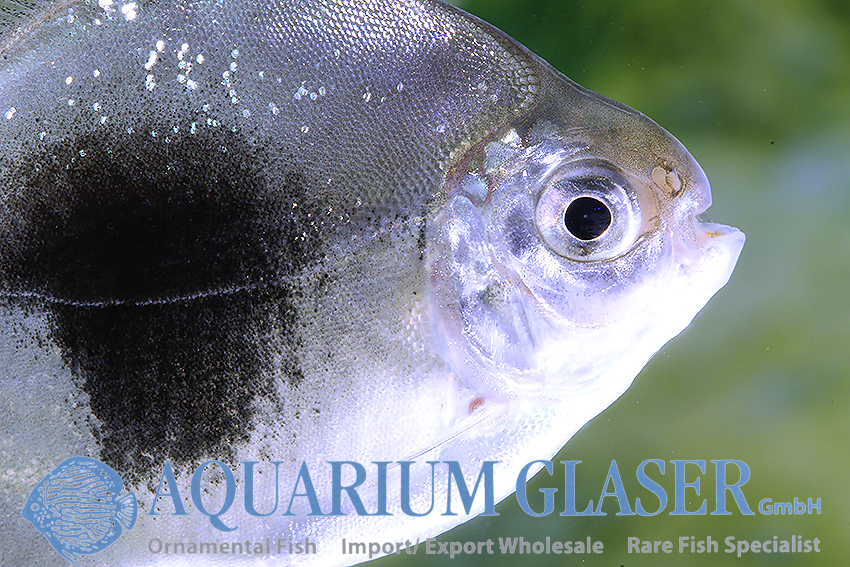Silver dollars and Pacus are magnificent fish. However, they grow quite large and most species eat plants, so they are mainly suitable for show aquariums and specialists, less for the classic community tank. Therefore, the demand can usually be met well with wild catches. However, some time ago breeders in Asia have taken up the species Myloplus schomburgkii (formerly the species was placed in the genus Myleus) to be independent from the irregular supplies from South America.
Myloplus schomburgkii is widespread and common in the middle and lower Amazon, the Rio Nanay, and the upper Orinoco. The species reaches a maximum length of about 45 cm and is used as a food fish. Juveniles show a crescent-shaped banding on a silvery ground, which varies in width depending on origin, so it is reasonable to assume that future studies will show that there are multiple, closely related species. The anal fin is colored red.
How and when the breeding form “Lamax III” appeared for the first time is not documented, we probably showed the first pictures in the western press, that was in 2012. It seems to be a very rare form, which is difficult to manifest in breeding, because on the world market in 2012 only 30 animals were offered, of which 20 came to Aquarium Glaser. One can probably say without exaggeration that at that time Myloplus “Lamax III” was one of the rarest fish in the world. In the meantime this has been put into perspective and you can get the form from several Asian breeders for more moderate (but still high) prices.
It is a bit speculative to assign Lamax III to the species Myloplus schomburgkii, but the thesis seems credible, since the breeder from which the fish originally came offered “normal” M. schomburgkii as “Lamax I” and the naturally occurring variant or species with the broad central band from the Alto Solimoes as “Lamax II”. Thus, it is reasonable to think that “Lamax III” is a mutation that occurred during the breeding of the aforementioned two forms. On the other hand, it is most likely not a cross, because all 20 “Lamax III” from the import of 2012 and also the now (2021) imported animals look identical. Moreover, in case of a hybrid there would certainly be more specimens, since such large fish as M. schomburgkii spawn several tens of thousands of eggs at once. The Lamax III are internationally also called “Blackberry”.
For our customers: the fish have code 270904 on our stocklist. Please note that we only supply wholesale.
Text & photos: Frank Schäfer





